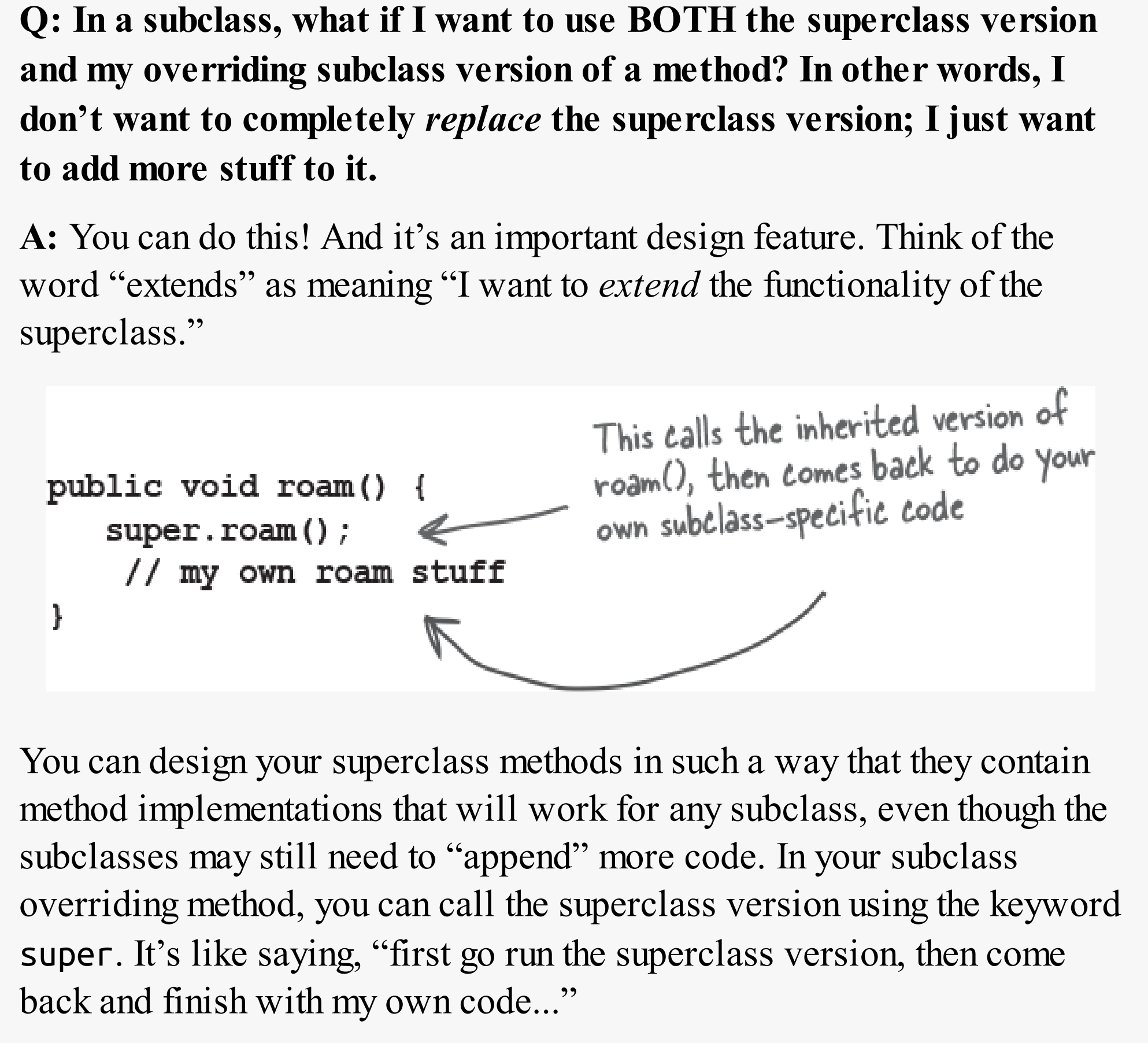Inheritance
Java
Inheritance:
Introduction

Subclass (square, triangle, etc) inherits from the superclass (shape). Subclass can override methods but instance variables are not overridden because they don’t need to be. They don’t define any special behavior, so a subclass can give an inherited instance variable any value it chooses. PantherMan can set his inherited tights to purple, while FriedEggMan sets his to white.
Subclass can add new instance variables and methods apart from those inhertied from superclass. A subclass inherits all public instance variables and methods of the superclass, but does not inherit the private instance variables and methods of the superclass.
In Java, we say that the subclass extends the superclass. An inheritance relationship means that the subclass inherits the members of the superclass. When we say “members of a class,” we mean the instance variables and methods.
IS-A test:
The IS-A test should make sense when you ask any subclass if it IS-A any of its supertypes. If class B extends class A, class B IS-A class A. This is true anywhere in the inheritance tree. If class C extends class B, class C passes the IS-A test for both B and A.
For example, Canine extends Animal ,Wolf extends Canine ,Wolf extends Animal ,Canine IS-A Animal ,Wolf IS-A Canine ,Wolf IS-A Animal
You’re always allowed to say “Wolf extends Animal” or “Wolf IS-A Animal.” It makes no difference if Animal is the superclass of the superclass of Wolf. In fact, as long as Animal is somewhere in the inheritance hierarchy above Wolf, Wolf IS-A Animal will always be true.
Superclass cannot extend subclass/inherit from subclass. There’s no reverse or backward inheritance. Think about it, children inherit from parents, not the other way around.
In subclass, use both superclass and overriding subclass version
Head First Java explains really well:

When to use inheritance?
1) When one class is a more specific type of a superclass. Example: Willow is a more specific type of Tree, so Willow extends Tree makes sense.
2) Have behavior (implemented code) that should be shared among multiple classes of the same general type. Example: Square, Circle, and Triangle all need to rotate and play sound, so putting that functionality in a superclass Shape might make sense and makes for easier maintenance and extensibility.
When NOT to use inheritance?
1) just so that you can reuse code from another class, if the relationship between the superclass and subclass violate either of the above two rules. For example, imagine you wrote special printing code in the Animal class and now you need printing code in the Potato class. You might think about making Potato extend Animal so that Potato inherits the printing code. That makes no sense! A Potato is not an Animal! (So the printing code should be in a Printer class that all printable objects can take advantage of via a HAS-A relationship.)
2) DO NOT use inheritance if the subclass and superclass do not pass the IS-A test. Always ask yourself if the subclass IS-A more specific type of the superclass. Example: Tea IS-A Beverage makes sense. Beverage IS-A Tea does not.